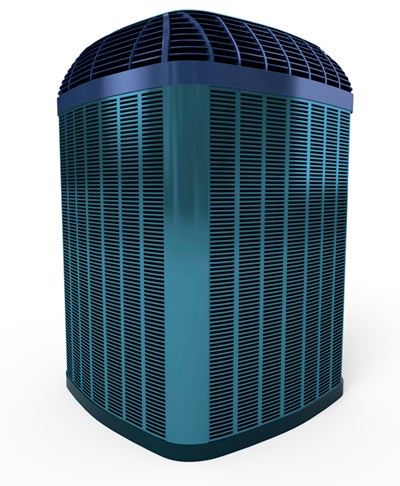Central Air Systems
Central air conditioners are designed to cool the entire occupied portion of the house. Most are known as split systems, meaning the air conditioner's main components are separate from each other. The cooling coil evaporator is mounted inside the home, usually in the furnace plenum connected to the ductwork, while the other major components (the compressor, condenser coil and fan) are located outdoors.
When the home has a forced air furnace, split systems will use the same ductwork. Absent a furnace, they have the ductwork all to themselves. A variation of a traditional central air unit is the heat pump. Heat pumps are like central air conditioners, except that the conditioning cycle can be reversed and the same system used for heating during the winter months. Heat pumps are either air-source or ground-source and this makes a significant difference in where they can be used. There is a separate section for heat pumps.

Traditional Central Air Systems
The most common central air system simply goes by the name of central air. It is a split system, providing conditioned air through the home's ductwork. The unit uses a refrigerant to provide cooling. The compressor condenses the refrigerant into a liquid and it is pumped to the cooling coil inside the home. Warm air is blown over the coils and the refrigerant absorbs the heat, cooling the air. The refrigerant is pumped back outside where it expands to a gas, releasing its heat that the fan blows out of the enclosure. The cycle then repeats.
When looking for a central air system, you should get the SEER* rating for the model(s) you are considering. Think of SEER like the MPG rating of a vehicle. It stands for Seasonal Energy Efficiency Ratio and is calculated by dividing the amount of cooling provided during the cooling season by the amount of electricity used to produce that cooling.
*SEER - The Seasonal Energy Efficiency Ratio, is the total cooling of the heat pump in BTUs divided by the total electrical energy input in watt-hours during the same period. Naturally, the SEER for a unit will vary depending on where in the country it is located. SEERs of 13 or higher are considered good and newer high-efficiency units are even higher.

